|
|
PICCOLE STORIE - DIARI MINIMI
J. KIM MUNHOLLAND
THE FRENCH ARMY AND
THE INTERVENTION IN SOUTHERN RUSSIA
1918-1919
"Russia
1917, un mondo a parte" nella sezone confini
(piè pagina)
3 parte
di 12
|
|
 |
|
passi (per il racconto completo vedi
link
http://www.persee.fr/web/revues/home/prescript/article/cmr_0008-0160_1981_num_22_1_1903
) |
|
Franchet d'Esperey |
The first official sign of French preparation for direct military
intervention in Southern Russia came on October 7, 1918, when Clemenceau
designated General Henri Berthelot to head a military mission with
responsibility for operations in Rumania and the Ukraine. While an
important task of this expedition was to assure the retreat of German
and Austro-Hungarian forces from the Ukraine and Rumania, Clemenceau's
instructions stressed the need « [de] réaliser l'encerclement économique
du bolchevisme et en provoquer la chute » as a leading priority. Already,
on December 23, 1917, the British and French governments had agreed upon
a division of responsibility for Southern Russia that assigned the
Donetz basin, the Crimea and the Ukraine to a French sphere of influence.*
Moreover, Clemenceau set aside a credit of one hundred million francs to
support various anti-Bolshevik activities in Russia. But French
assistance to the anti-Bolshevik cause was limited to economic aid and
the dispatch of some military advisors during the first year after the
revolution. Prospects for a more active and overt intervention increased
in the fall of 1918. A string of Allied military victories in the Balkan
theatre meant that some of these troops would be available for a
military expedition to Southern Russia. Berthelot was to draw upon these
soon to be released troops, and his responsibilities were broadly
defined to enable him to act beyond the supervision of German and
Austrian withdrawal from occupied Russian territory. His orders required
him to supply military support to local governments and organizations in
their struggle against Bolshevism, and Clemenceau appointed technical
advisors to the mission who would « contribuer à la reconstruction
économique du pays en étendant son action dans le domaine industriel et
commercial. » On the eve of the armistice the French cabinet formally
approved plans for intervention. These broad political and economic
goals gave the French intervention more the appearance of a pre-war
colonial expedition than a conventional military operation.
The selection of General Berthelot to head the Allied military
expedition posed certain problems for French relations with General
Denikin's Volunteer Army. Berthelot had extensive contacts in Rumania,
stemming from his experience as head of a French military mission to
that country in 1916-1917. While these connections recommended him for
the Rumanian half of his assignment, they created liabilities among the
white opposition, which suspected him of being pro-Rumanian and
therefore hostile to Russian claims in Bessarabia. Nevertheless,
Berthelot assumed his task with enthusiasm and appeared determined to
advance French interests in both Rumania and Southern Russia. To assure
the Volunteers that French intervention would be on a grand scale,
Bertheiot indicated to General Shcherbachev, Denikin's representative to
the Allied powers, that twelve Allied divisions would be available to
occupy Southern Russia and to assist the Volunteer Army in its struggle
against the Bolsheviks. At least Shcherbachev elatedly sent a report
along these lines to General Denikin's headquarters. Berthelot's
promise apparently reflected unofficial assurances that he had received
in Paris prior to departure. Events proved these promises to be
exaggerated, but Berthelot's initial optimism raised excessive hopes
among the Volunteers. As a member of the British military mission to
Denikin noted in December, "General Denikin's staff had prepared a
beautiful paper scheme for the re-conquest of Russia which required
eighteen Allied Divisions and munitions, etc., for half a million
Russian troops whom they proposed to mobilize under the cover of the
Allied Divisions. ». Berthelot's appointment also
created some friction within the command structure of Allied forces in
Eastern Europe. In order to bypass General Franchet d'Esperey,
Commander-in-Chief of the Allied Army of the East, toward whom
Clemenceau harbored considered antipathy, Berthelot's command was
organized independently so that he reported directly to Foch and
Clemenceau. Franchet d'Esperey grumbled at this division of military
authority, and he differed with Berthelot over prospects for a
successful intervention in Southern Russia. He warned that the
expedition would have to be massive - at least ten thousand more men
than had been scheduled for Russian service- if the promises of the
French government were to be fulfilled. Existing resources in the
Eastern Theatre were insufficient. Many units designated for the Ukraine
fell below normal strength, and Franchet d'Esperey predicted that
Senegalese troops from the colonial army, who were to be part of the
expedition, would find the Russian climate intolerable. He also warned
of war-weariness and poor morale among many units. Some officers and
soldiers had seen eighteen to twenty-four months' duty without leave,
and in their exhausted condition they were susceptible to the influence
of Soviet propaganda. According to the official Greek history of the
intervention, Franchet d'Esperey noted that while French soldiers fought
enthusiastically against the Central Powers and relished the prospect of
victory on the Danube, they viewed any occupation of the Ukraine with
hostility and threatened mutiny. Thus, Franchet d'Esperey insisted that
only volunteers or politically trustworthy troops not scheduled for
immediate de-mobilization be employed in Russia. By the time the
expedition was ready to embark for Russia from bases in the Balkans,
Berthelot began to share Franchet d'Esperey's reservations. He
discovered that only three divisions, not twelve, were immediately
available to occupy a wide expanse of territory in the Ukraine, and one
of these divisions could not be employed due to an influenza epidemic
within its ranks. Berthelot now argued that the intervention was doomed
to fail unless extensive reinforcements arrived promptly from France.
Even at this early stage there was a large discrepancy between what
Berthelot had promised the Volunteers and the realities of French
support for military intervention. |
|
Prefazione:
Allied
intervention in the Russian Revolution and civil war continues to
fascinate historians and to provoke lively controversy over Allied
policy. One episode of the intervention that has been vigorously
criticized from diverse viewpoints was the French decision to send an
Allied military force into the Ukraine and the Crimea during the winter
and spring of 1918-1919. While differing in their explanations, western
and Soviet historians are virtually unanimous in describing the French
intervention in Southern Russia as a failure. A leading Soviet historian
has attributed this failure to war-weariness and mutinies among the
Allied troops, an inability of French leaders to chose among the
conflicting anti-Bolshevik movements, and to the effectiveness of the
Bolshevik- led resistance. For most western historians French military
intervention appeared to have been badly organized, insufficiently
supplied, and ill-defined in its objectives. In a severely critical
assessment Peter Kenez has observed that French leadership failed to
match its policy with the resources necessary for success, thereby
casting doubts upon its own competence, and John Reshetar has dismissed
the operation as "a French fiasco." Only one historian so far has argued
that French policy was not an unrelieved catastrophe, but this
assessment was made without benefit of French archival sources that
recently have been opened to scholars. Most western accounts rely
heavily upon memoirs of participants sympathetic to the Volunteer cause
and upon documents brought to the west by white émigrés after the defeat
of anti-Bolshevik forces. These memoirs and documents reflect the biases
and frustrations of the Volunteers who were bitterly critical of French
policies in Southern Russia. ..intervention in Southern Russia (both
English and French) was initially conceived along lines of a pre-war
"colonial" expedition whereby French leaders hoped to acquire political
(a Bolshevik defeat) and economic (a sphereof influence) gains from a
limited investment. |
|
|
|
|
Symon Vasylyovych Petliura also
known as Simon Petlura (10/5/1879-25/5/1926) was a publicist,
writer, journalist, Ukrainian politician, statesman, and national leader
who led Ukraine's struggle for independence following the Russian
Revolution of 1917. During the period of Ukrainian independence in
1918–1920, he was Head of the Ukrainian State. On
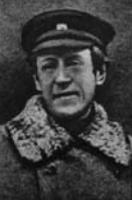 May
25, 1926 Petliura was assassinated in Paris by the Jewish anarchist
Sholom Schwartzbard. trad. Petliura era un giornalista che si batteva
per l'indipendenza dell'Ucraina. Durante il periodo 1918/1920 fu a capo
del governo ucraino. Verrà assassinato a Parigi nel 1926 da un
ebreo anarchico. un altro sito così lo chiama:
Giorgio Petliura ( 1879-1926 ) partecipò
da giovane al movimento nazionalista ucraino. Il 21 novembre 1917, con
la proclamazione dell'indipendenza dell'Ucraina, divenne ministro della
Guerra e comandante in capo dell'Esercito. Dopo la pace di Brest-Litowsk
fu imprigionato dai tedeschi. Liberato nel novembre 1918 e divenuto capo
dello Stato, combatté sia contro i Rossi che contro i Bianchi. Alleato
dei polacchi nella guerra del 1920 contro la Russia, dopo la pace di
Riga e la relativa spartizione dell'Ucraina, fu costretto ad emigrare a
Parigi, dove fu assassinato. May
25, 1926 Petliura was assassinated in Paris by the Jewish anarchist
Sholom Schwartzbard. trad. Petliura era un giornalista che si batteva
per l'indipendenza dell'Ucraina. Durante il periodo 1918/1920 fu a capo
del governo ucraino. Verrà assassinato a Parigi nel 1926 da un
ebreo anarchico. un altro sito così lo chiama:
Giorgio Petliura ( 1879-1926 ) partecipò
da giovane al movimento nazionalista ucraino. Il 21 novembre 1917, con
la proclamazione dell'indipendenza dell'Ucraina, divenne ministro della
Guerra e comandante in capo dell'Esercito. Dopo la pace di Brest-Litowsk
fu imprigionato dai tedeschi. Liberato nel novembre 1918 e divenuto capo
dello Stato, combatté sia contro i Rossi che contro i Bianchi. Alleato
dei polacchi nella guerra del 1920 contro la Russia, dopo la pace di
Riga e la relativa spartizione dell'Ucraina, fu costretto ad emigrare a
Parigi, dove fu assassinato.Greece was one of Nations contributed to
the allied expedition of the Ukraine, against Soviet Russia, in order to
overthrow the Communist regime. The Greek Expeditionary Corps composed
of the entire A' Army Corps, under Maj. Gen. Constantinos Nither . Greek
‘A' Corps with three French divisions, one Polish division & detachments
of White Russian Volunteers, consisted the 1st Allied Divisional Group.
Soviet Russia responded to the allied intervention by sending three
entire armies to Crimea & Odessa. The Greeks fought in the battles of
Bol-Buyalik, Cherson, Nikolaiev & finally in Odessa. By the summer of
1919 (Greek withdrawal), Greek losses accounted for 398 KIA (morti), 657
WIA (feriti).
|
 |
|
|
|
|
|
The first units of the Allied expedition did not reach
Odessa until December 17 or Sebastopol until Christmas day. From the
moment of their arrival French military commanders became entangled in
the complex political rivalries of Southern Russia. After the armistice
a three-way competition for Allied support in the Ukraine emerged
between Hetman Skoropadsky, whose government in Kiev had been supported
by the Central Powers, a newly formed Ukrainian directorate, whose
military forces were commanded by Simon Petliura, and elements who
looked to Denikin's Volunteer Army, mainly aristocrats, landholders and
the wealthier bourgeoisie of the cities, to restore their position in a
large Russian state "one and indivisible. " By the time the French went
ashore in Odessa, the authority of Skoropadsky had completely
disintegrated. This left the intense conflict between the Directorate,
which favored at least an autonomous Ukraine, and the Volunteers, who
showed no patience for Ukrainian nationalist feeling. In the meantime,
Bolshevik forces had invaded the Ukraine and were marching upon Kiev. In
the eyes of French officers this danger was immediate to Ukrainians and
Volunteers alike and required cooperation if it were to be checked.
Prior to the French army's appearance in the Ukraine, French relations
with the Volunteers had already been influenced by the activities of
diplomatic agents on the spot, notably at the Jassy Conference. Between
November 16 and December 6 various anti-Bolshevik political leaders met
with Allied representatives in the Rumanian city of Jassy and, later, in
Odessa in what proved to be an abortive effort to formulate a common
program of political action and strategy in connection with Allied
intervention. The Russian delegations to Jassy agreed that Allied
intervention was essential to the re-establishment of a Russian state,
but they disagreed over the political structure for any provisional
Russian government and were clearly hostile to any Ukrainian nationalist
claims. Although the conference lacked official recognition from the
Allies and was barren of practical results, one of the French
representatives to the conference, a self-styled vice-consul from Kiev
named Emile Henno, created the impression that France was strongly
committed to support for General Denikin's Volunteer Army rather than
the Ukrainian nationalists of the Directorate. Indeed, the Russian
delegates at Jassy took Allied intervention for granted and assumed that
it would be on a massive scale. The conference thus revealed the unduly
optimistic hopes held by the Volunteers concerning Allied support for
their claims, and it also revealed the difficulty of finding a common
program for the various anti-Bolshevik factions. These internal
disagreements became a major source of frustration for the French
military commanders when they arrived in the Ukraine. The French
officers could not understand why differences could not be set aside in
the face of the need to defeat the Bolshevik forces. When French units
first reached Odessa on the 17th, they discovered an uneasy truce in the
city between a smattering of Polish soldiers, Volunteers commanded by
General Grishin-Almazov, a handful of French marines, and the much
larger Ukrainian force of Simon Petliura, which occupied most of the
city. Grishin-Almazov assured the French of protection as the Allied
troops began embarking on the morning of the 18th. From the beginning
skirmishes developed between the Volunteers and the Petliurians in
certain points in the city, and a salvo from French warships in the
harbor was needed to restore order. In negotiations with representatives
from the Ukrainian army that day, General Bonus, the commander of the
French expedition, secured the withdrawal of Petliura's troops outside
the city. General Borius then announced that Odessa was under French
protection, and he appointed Grishin-Almazov military governor of the
city. This decision increased the impression of French support for the
Volunteer cause and collaboration between the Allies and Denikin. In the
next few weeks the French expedition, augmented by a sizeable Greek
contingent and smaller units of Polish, Rumanian and Czech troops,
seized Nikolaev, Kherson and Tiraspol so that Allied forces controlled
an arc of territory in the Western Ukraine along the northern shore of
the Black Sea between the Dniester and Dniepr rivers. In January General
d'Anselme arrived in Odessa to assume command over operations in the
Western Ukraine, and he quickly established contacts with Simon Petliura.
At Kherson and Nikolaev, d'Anselme's representatives arranged with
Petliura's troops for a peaceful transfer of power to French authority.
The French command later justified this decision on the ground that
Petliurians controlled the communication lines with Odessa, and the only
alternative to negotiation was a direct and perhaps bloody confrontation.
D'Anselme's decision to negotiate with Petliura enraged the Volunteers
who accused the French of treachery for dealing with Ukrainian
nationalists. D'Anselme replied that the Volunteers lacked any authority
in the region, and military necessity rather than any political
consideration dictated his decision. In response to Denikin's complaint
about his dealings with Petliura, d'Anselme observed that his relations
with the Directorate were of a purely military character. The occupation
of Kherson and Nikolaev was crucial for the protection of Odessa and the
security of vital supplies and military stores in Nikolaev itself. As
evidence of his good faith, d'Anselme pointed out to Denikin's
representatives that he had declined Petliura's offer to place the
entire Ukraine under French protection. But d'Anselme insisted from the
outset that his instructions required that he cooperate with all
patriotic elements, not just the Volunteers, opposing the Bolsheviks.
Relations between the Volunteers and the French command began
inauspiciously. The French officers did not feel bound by whatever
commitments Henno may have made to the Volunteers in their dispute with
the Ukrainian nationalists. The task of the intervention was relatively
straightforward: to assist all elements engaged in a struggle against
Bolshevism. In the eyes of the French command in Odessa the Volunteers
appeared to be unpromising material as a nucleus for an anti- Bolshevik
front. Expecting to find a fighting force, the French complained that
the Volunteers were too few in numbers and too unpopular to be of much
military value. D'Anselme later claimed that the Volunteers were
extremely unpopular with the Ukrainian peasants who identified Denikin's
allies with the detested old regime. « Entre les volontaires et le
peuple », he observed, « c'est une haine véritable, sauvage » He
noted that it was not his task to impose Czardom or the Volunteers upon
the people of the Ukraine. Even Franchet d'Esperey found the political
attitudes of the Volunteers too reactionary for his conservative tastes,
and he blamed them for alienating the local population. French officers
later attributed the failure of intervention to their links with
reactionary elements associated with the old order. |
|
... The Allies,
then, would treat Bolshevism as an enemy. Their main new presence was on
the Black Sea-opened by the Twidsh defeat. The British concentrated on
the southeast; there the Volunteer Army and the Cossacks had created
friendly territory. The French faced greater problems in the southwest;
no one controlled the Ukraine and the Crimea, and the Reds were moving
south unopposed. The first French detachments reached the great port of
Odessa on 18 December 1918, but their numben were small. The town was,
as Denikin later put it, a political babel. The· (Ukrainian nationalist)
Directory had just taken the city over (as Hetman Skoropadsky's
authority broke up), but not even a fifth of the people were Ukrainian
(the rest were Russian, German or Jewish). After a month of confusion the French
began to negotiate with the Ukrainian nationalists, but in February 1919
Kiev fell to Soviet forces and the Directory became a shadow. Br
belatedly negotiating with the Ukrainian "separatists" (what Denikin
called a "marriage in the graveyard") the French fell out with the "all-Russian"
Whites and relations were never to improve.
TRADUZIONE
Gli Alleati, poi, avrebbero dovuto affrontare il bolscevismo come un
nemico. La loro ultima presenza era sul Mar Nero, aperto dalla sconfitta
turca. Gli inglesi concentrati a sud-est (Caucaso), Qui l'esercito
volontario e i cosacchi avevano creato un territorio "amico". I francesi
fronteggiavano maggiori problemi nel sud-ovest, nessuno controllava
l'Ucraina e la Crimea: i Rossi si muovevano verso sud senza opposizione.
Il primo distaccamento francese ha raggiunto il grande porto di Odessa,
il 18 dicembre 1918, ma erano pochi. La città era, come disse poi
Denikin, una babele politica. Il direttorio (nazionalista ucraino) aveva
appena preso la città ma nemmeno un quinto della popolazione era ucraina
(il resto era russa o ebrea 37% che nessuno cita mai perché
politicamente "azzoppati" dal regime zarista: Vedi altri capitoli
precedenti riguardanti i pogrom). Dopo un mese di confusione, i francesi
hanno cominciato a negoziare con i nazionalisti ucraini, ma nel febbraio
del 1919 Kiev cadeva contro le forze sovietiche e il Direttorio era
diventato un'ombra. I successivi negoziati con i "separatisti" (quello
che Denikin chiamava un "matrimonio nel cimitero"), i francesi si
inimicarono il resto dei russi Bianchi e le relazioni non migliorarono
più. |
|
|
|
|
|
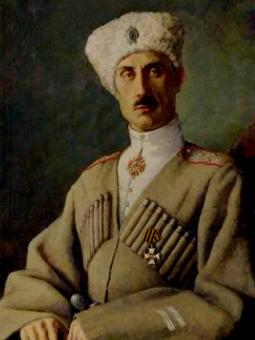 |
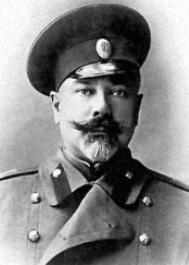 |
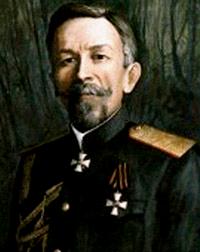 |
|
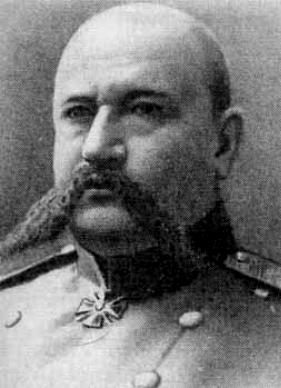 |
|
Peter
Nikolaevic' Wrangel' (Novo Aleksandrovsk, Kovno, 1878). |
|
Lavr Georgievič Kornilov
|
|
|
|
Di famiglia svedese
trasferitasi in Germania, militò nell'esercito russo e combattè contro i
Giapponesi. Allo scoppio della rivoluzione sovietica si ritirò in Crimea
assumendo il comando della Armata controrivoluzionaria alla morte
del generale Kornilov e alla disfatta del generale Denikin a Orel nel
1919. Ridotto ormai a difendere la sola Crimea e poco più, riorganizza
le truppe rimaste (primavera 1920) e sferra l'ultima disperata
offensiva, che lo porta a sconfiggere i rossi inseguendoli fino al
Dnjepr (ottobre 1920). Perso il sostegno delle potenze occidentali e
osteggiato dalla popolazione si ritirò a Costantinopoli con i resti
dell'esercito nel novembre 1920. Riparò poi in Iugoslavia e dal 1925 in
Belgio dove vi morì nel 1928. |
prigioniero durante una
battaglia contro gli austriaci fuggi e rientrò in Russia dove ricoperse
la carica di comandante del distretto di Pietrogrado e da luglio del
1917, rivoluzione in corso, quella di Supremo Comandante in capo delle
forze armate del governo provvisorio. Travolto dalla rivoluzione
d'ottobre costituì sul Don l'armata dei volontari con Mikhail Alekseev
che lo sostituirà e morirà nel settembre dello stesso anno in
circostanze misteriose. Kornilov sarà ucciso il 13 aprile 1918 da
un commando bolscevico. |
|
|
|
|
|
|
|
In addition, mutual hatreds and distrust among the Russian
opposition blocked effective agreement on a common policy, and d'Anselme
despaired of uniting various groups whose opinions ranged from the
Czarist inclinations of the Volunteers to the socialists sitting on the
municipal councils of Odessa, Nikolaev and Kherson. What made his task
difficult, he lamented, was the mutual hatreds of these groups for each
other. These divisions threatened to defeat the formation of any
anti-Bolshevik front. The disunity that had enabled the Bolsheviks to
triumph in the first place continued to weaken the Russian opposition.
« Les Russes n'ont rien appris », Berthelot warned his superiors in Paris,
« ni de la guerre, ni de leur révolution. ». At the same time French
officers did not disguise their disgust at the behavior and fighting
qualities of the Volunteer army and its officers' corps. The Volunteer
officers in Odessa behaved with a remarkable irresponsibility and
arrogance in the eyes of the French. « Ils jouent, boivent et s'amusent
comme par le passé, » one report noted, with little regard for the
impression that this behavior created. Admiral Amet, the commander of
the French squadron in the Black Sea, became convinced that Denikin's
Volunteer Army « ne constitue pas en réalité une force sérieuse et que
les éléments qui entourent son chef ne sont pas d'un moral à la hauteur
de la tâche qui leur incombe. » The Volunteer Army appeared unduly
top-heavy according to Colonel Freydenberg, General d'Anselme's chief of
staff, who described the Volunteers as a parody of Condé's army, being
composed nine-tenths of officers and « n'ayant aucune racine dans le
peuple. » Once they had been set up in Odessa, d'Anselme observed, the
Volunteers preferred governance to fighting. He also noted the
preponderance of officers among Denikin's followers, including nine
active duty admirals who were in charge of the port at Odessa. « L'armée
Denikine est une gêne plutôt qu'une aide, » Franchet d'Esperey cabled at
one point. « Elle a tous les défauts de l'ancienne Armée russe et n'en a
pas les qualités» L'armata Denikin ha tutti i difetti
dell'antico regime e nessuna qualità: As for Denikin himself, General Berthelot concluded,
« En réalité, cet homme est un mégalomane. » e su Denikin stesso "è
un megalomane". |
|
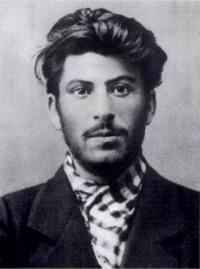 |
|
(the rest were Russian, German or Jewish) |
|
|
|
Oltre alla più nota colonia tedesca del Volga
si era creato qui a Odessa e bassa Ucraina un eguale insediamento a
partire dal 1803 con famiglie provenienti dal Württemberg ma anche dal
Baden, dall'Alsazia e dalla Lorena. Era questa zona di transito
tradizionale delle armate che si spostavano da Ovest verso Est o
viceversa per le guerre e lungo il relativo tragitto si compivano
distruzioni e saccheggi. Alla fine del 1803 l'ufficiale francese Franz
Ziegler si offrì di portare 80 famiglie in Russia ed di fondare una
colonia. Ma Ziegler non reclutò solo coloni (contadini): alla fine
reclutò 1.140 persone (325 uomini e 245 donne con 571 bambini) e li
mandò, in dieci trasporti sul Danubio, da Ulm fino ad Odessa. Negli anni
1808/09 seguì la 2a e più grande ondata d'emigrazione. Questo gruppo,
insieme a coloni del Palatinato Meridionale e del Ducato di Baden, fondò
le colonie cattoliche sul Cuciurgan e sul Beresan. Dopo la caduta di
Napoleone e l'invasione dell'Alsazia, nel 1817 seguì una 3a ondata.
L’era Napoleonica s'era chiusa si con la sconfitta del Corso ma anche
con la crisi della società centroeuropea e una situazione finanziaria
disastrosa (causata anche da cattivi raccolti negli anni 1815-1817).
Fino al 1808 si erano insediate qui circa 2.563 famiglie (13.337
persone). Nel complesso da febbraio 1804 a novembre 1809, sono state
messe a disposizione circa 71.900 desjatine (1 desjatine=1,0925 ha) di terreno. In cent'anni il
loro numero era naturalmente lievitato |
|
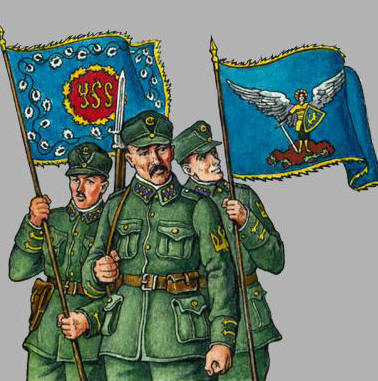 |
|
|
|
|
|
Odessa scelta come base dai francesi non era certo il posto
ideale per fare dell’imperialismo. Pochi ricordano ma qui era di base la
corazzata Potëmkin che 13 anni prima (27 giugno 1905) mentre era alla
fonda nell'isola di Tendra vide l’equipaggio ammutinarsi. Il motivo più
che politico in quell’anno difficile era umanitario. Cercavano di
servire a mensa carne avariata. Durante i disordini gli ammutinati
uccisero sette dei diciotto ufficiali, compreso Giliarovskij
(l’ufficiale di mensa) e il capitano Evgenij Golikov, e gli ufficiali
superstiti vennero messi agli arresti, mentre tra gli insorti il
marinaio Grigorij Vakulenčuk a capo dell'ammutinamento, venne ferito
mortalmente. I marinai della nave organizzarono a bordo una commissione,
nominando loro portavoce il marinaio Afanasij Matjušenko. La nave
ritornò ad Odessa issando la bandiera rossa ed appoggiando i disordini
che nel frattempo erano scoppiati in città. Durante questi disordini due
colpi partiti forse per errore dai cannoni da 152mm della corazzata
vennero indirizzati verso il palazzo dove erano riunite le autorità
locali zariste. Da quel momento per il resto della flotta c’era solo un
incarico, affondare la Potëmkin costi quel che costi. Naturalmente la
cintura attuata al largo del porto non funzionò perche gli equipaggi per
solidarietà non spararono e la corazzata puntò libera verso Sebastopoli
seguita anche da altre ribelli (a questo punto si deve dedurre che anche
ufficiali fossero ammutinati perché una nave non la portano dei semplici
marinai). La corazzata Potëmkin dopo aver peregrinato a lungo nel Mar
Nero, si diresse verso la Romania giungendo nel porto di Costanza dove
le autorità negarono il permesso di attracco, sparando anche su un
gruppo da sbarco della nave. Gli equipaggi, comunque sbarcati, vennero
consegnati ai russi salvo pochi che si eclissarono e il loro destino in
patria fu segnato. Della nave non si parlò più anche perche gli venne
cambiato nome. Dopo la rivoluzione d'Ottobre il 29 dicembre 1917 venne
incorporata nella Flotta Rossa degli operai e dei contadini (Russo:
Рабоче-Крестьянский Красный флот, Raboče-Krest'janskij Krasnyj Flot o
RKKF) e il 1º maggio 1918 venne catturata a Sebastopoli dai tedeschi che
dilagavano in tutta l’area meridionale della Russia fino al Caucaso dopo
la firma dell’armistizio. Dopo la sconfitta degli Imperi Centrali il 24
novembre dello stesso anno venne catturata dalle truppe anglo-francesi e
tra il 22-24 aprile 1919 venne resa inutilizzabile dall'equipaggio
dell'incrociatore inglese Calypso che ne danneggiò irreparabilmente le
macchine, per evitare che cadesse in mano dell'Armata Rossa che si
avvicinava alla città e che avrebbe conquistato il successivo 29 aprile.
Una conquista al tempo non era una cosa definitiva. Il 1919, l’anno
della controrivoluzione, vide la corazzata tornare nelle mani dei
bianchi (24 giugno) e il 15 novembre 1920, quando i bolscevichi si
ripresero Sebastopoli, trovarono la nave all'ormeggio, danneggiata
irreparabilmente. Verrà demolita |
|
In 1881, Czar Alexander the II was
assassinated by a group of 15 conspirators. Only one of the conspirators,
Gesya Gelfman (or Hesya Helfman), was Jewish by birth, but the
assassination touched off a series of pogroms against Jews.
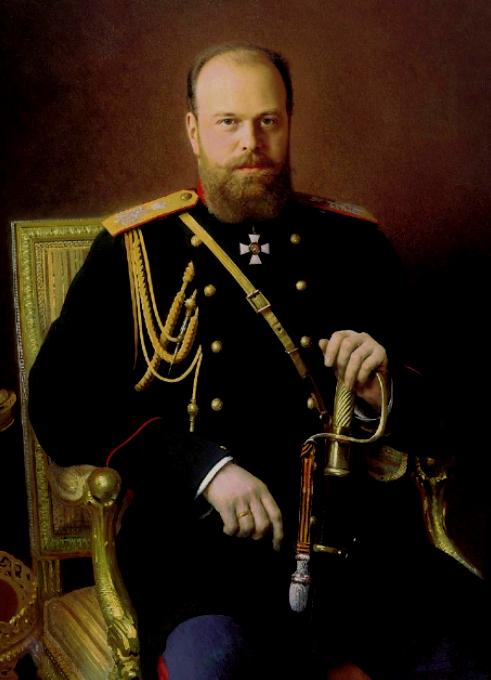 |
|
Ma come erano andate veramente le cose
per arrivare a questo punto |
|
|
|
La propaganda bolscevica che
la zona fosse occupata o no faceva il suo lavoro e ancor meglio se era
clandestino in zone sotto il controllo della selva di anticomunisti che
andava dai Cosacchi ai generali del vecchio regime, dai nazionalisti
locali ai contadini, dai tedeschi a tutti quelli che in un impeto di
egocentrismo riuscivano a dichiarare una propria “autorità”.
L’esercito dei cospiratori era ampio e popolato anche da occidentali.
Tra questi si ricorda Jeanne Labourbe, insegnante di lingua francese che
da anni viveva ad Odessa fucilata ancor prima dell'inizio della
ribellione, senza che avesse rivelato il nome di nessuno dei complici ma
anche André Marty (ufficiale di marina che vedremo dopo) futuro capo del partito
comunista francese poi combattente in Spagna nelle brigate
internazionali in cui lascerà il segno con la sua battaglia personale
fra gli anarchici (macellaio di Albacete) e Il POUM (Partido Obrero
de Unificación Marxista-le giornate di maggio 1937). Chi sono i
nemici del popolo? «I nemici del popolo sono i fascisti, i trotzkisti e
gli “incontrollabili”». Il POUM è costretto all’illegalità, i suoi capi
assassinati o arrestati; gli anarchici ridotti alla ragione, come diceva
Churchill- «col ferro e col fuoco».
Nel febbraio 1919 quindi i marinai
della nave francese Mirabeau cominciarono a ribellarsi agli ordini: i
soldati del 58° e 176° reggimento di fanteria, dislocati,
rispettivamente, nei pressi di Tiraspol e a Cherson, si rifiutarono di
combattere contro la repubblica dei soviet. Intanto un gruppo di soldati
francesi, nelle zone di Odessa e della Crimea, pubblicarono il 25 marzo
1919 una lettera aperta sulla stampa sovietica, affermando che, convinti
della giustezza della lotta rivoluzionaria del proletariato russo, essi
rinunciavano alla guerra e che al ritorno in patria avrebbero raccontato
la verità ai lavoratori francesi. Ben presto manifestazioni simili si
ebbero in quasi tutta la flotta attraccata ai porti del mar Nero e della
Crimea, tanto che il governo di Clemenceau fu costretto a smobilitare la
maggioranza dei marinai e a dichiarare ufficialmente la rinuncia alla
partecipazione diretta all'intervento. Dal 6 al 25 aprile l’intera
flotta francese lasciò il mar Nero dopo le ultime agitazioni di Sebastopoli (Crimea). Tra i marinai francesi ammutinati c’era anche un giovane annamita (o vietnamita)
chiamato Ton Die-Tang: il futuro Ho-Ci-Min (1890-1969).
ma il suo effettivo contributo viene sminuito qui a pag 258 |
|
Capitan Conan di
Bertrand Tavernier ...... Esemplare la raffigurazione della classe
ufficiali superiori francesi attenti solo alle divise da indossare nelle
occasioni ufficiali e per i quali il pranzo alla mensa di mezzogiorno
equivale ad una manovra di guerra. L' armata francese continua a vagare
da un posto all'altro della Romania per finire al confine con la Russia
Rivoluzionaria. Ai “soldati maledetti” (gli arditi di Conan), di nuovo
in esercizio, viene chiesto il bis. Norbert, ufficiale amico, osserva
disgustato Conan, che con occhi folli e brandendo un pugnale, infierisce
sui cadaveri dei nemici e incita i suoi a inseguire i bolscevichi ormai
in fuga. Conan ritornato in patria a fine conflitto non è altro che un
fantoccio d'uomo, l’umile venditore di nastri e stoffe di quando era
partito, spoglio ormai di quella che era diventata la sua orribile,
unica ragione d'essere. Come diceva - lui la guerra l’aveva vinta - gli
altri l’avevano solo fatta sulla sua pelle in questo riportando la
filosofia solitaria del Rambo prima maniera di Sylvester Stallone di cui
sembra il flash back. .... |
|
http://books.google.it/books?id=A60OggwLPrAC&dq=andr%C3%A8+marty+sevastopol+protect&source=gbs_navlinks_s
|
|
Una volta liberata la Polonia
ex zarista, per ingraziarsi le popolazioni, Austria e Germania decisero
di creare un regno fantoccio chiamato Reggenza del Regno di Polonia
(5/11/1916-11/11/1918 Il re non si trovò mai). Le armate tedesche
intanto continuavano ad occupare il regno e a chiedere collaborazione
che non veniva prestata per la guerra che continuava contro la Russia.
Dopo l’armistizio Russo Tedesco di Brest (marzo 1918) la Germania
incorpora Estonia, Lettonia, Lituania, di fatto la Polonia, e viene a
confinare con la Russia Bianca o Bielorussia, che ha per capitale Minsk
poi l'Ucraina, che ha per capitale Kiev. La Bielorussia non ha grande
importanza economica ma la ricca Ucraina si e di fatto diventa un
protettorato tedesco. Sarà con l'aiuto (armi) e i consigli che lo stato
nazionale ucraino sopravviverà per alcuni anni. Sotto questa forma
truppe tedesche scacciarono i bolscevichi tra l'aprile e il maggio del
1918 da Charkov, Odessa, Rostov sul Don e Taganrog (Mar d'Azov) e dalla
Crimea con l’aiuto delle armate bianche. Il 29 aprile 1918 i
tedeschi deposero però la Rada ucraina e nominarono hetman o dittatore
il generale bianco Skoropadsky. Le forze degli imperi centrali agivano
anche nel Caucaso per un possibile controllo delle fonti energetiche
petrolifere della Cecenia e di Baku ma tutto ebbe però “formalmente”
termine con l'armistizio del novembre 1918, formalmente perché in Russia
fra prigionieri e soldati regolari sembra ci fosse un milione di persone
(di cui molti degli ex territori polacchi sia austriaci che tedeschi).
L’11 novembre del 1918 Pilsudski, liberato dai tedeschi, proclamò
l’indipendenza della Polonia e divenne Capo dello Stato (per ora
ridotto) e suo Comandante Supremo. Ci vollero mesi per avere una
parvenza di stato. Ci furono diversi tentativi durante il 1918 di
svincolare reparti polacchi sia dalla tutela rivoluzionaria (per gli ex
appartenenti all’esercito zarista) che da quella tedesca (per le aree
polacche ex germaniche e austriache) ma nessuno andò a buon fine salvo
quello del generale Jozef Dowbor-Musnicki che troviamo accanto ai
francesi nel 1919. I polacchi, da soli senza alcun aiuto, iniziavano
intanto una guerra più territoriale che ideologica, contro i sovietici.
Fra alterne fortune il conflitto porterà i Russi alle porte di Varsavia
(sconfitti però il 15 agosto 1920 dal Maresciallo Jozef Pilsudski
e dai generali Jozef Haller e Wladyslaw Sikorski nella battaglia detta
del "Miracolo sulla Vistola"). Ma torniamo al nostro
periodo. La vittoria dei Bolscevici a Odessa non aveva però cambiato le
carte in tavola nella Russia Ucraina. Un mese dopo Grigoriev lasciava
l’armata rossa per un altro dei ras Nestor Makno e due mesi dopo per
Denikin, ma la sua avventura bipartisan era agli sgoccioli: verrà
assassinato il 27 luglio 1919. |
|
 |
|
|
|
|
|
ANDRE MARTY
La storia degli ammutinamenti in Russia è
lunga e non è il caso qui di inventariarla. Ne erano stati vittime anche
gli Usa col loro corpo di spedizione nel Mar Artico in condizioni di
impiego estremo. Un vantaggio dei Sovietici è che avevano si tanti
nemici ma ognuno impegnato a fare una propria guerra indipendentemente
dall’altro. Ciò permetteva loro di affrontarli uno alla volta, tattica
usata poi da Rommel quando il nemico si faceva in quattro.
La protesta dei soldati di terra francesi
(58 e 176° reggimento) passa ai marinai imbarcati. Era però già da
dicembre che un certo malumore covava sulle navi. Erano lontani da casa
da anni e proprio ora che la guerra era finita sembrava cominciarne
un'altra. E’ l’ingegnere di bordo (Cacciatorpediniere Protet) André
Marty di base a Sebastopoli che dietro il paravento di un corso per
meccanici parla di guerra e socialismo e prepara un manuale per i
sabotaggi. L’anarchismo di Marty era conosciuto e ci si stupisce di chi
l’abbia selezionato (per il servizio militare da ufficiale) e imbarcato
per una simile missione. Il seguito, nel senso dell'interesse gli da
certezza che in caso di sollevazione molti lo asseconderanno. Organizza
quindi un colo di mano a fini dimostrativi per impadronirsi della nave e
girare fra gli ormeggi qui e a Odessa inneggiando alla pace e al ritorno
in patria. Il 16 aprile lui però è in galera perche due “scolari” in
effetti erano delatori del comando. Nella sua detenzione ha però modo di
scoprire quanto la rete socialista sia vasta. Lo aiutano, lo sfamano,
gli fanno tenere contatti con l’esterno e gli evitano possibili
mascherate fughe in cui lo avrebbero ucciso fino alla sua liberazione e
l’imbarco sulla Waldeck Rousseau ad Odessa. Anche sulla corazzata
France, lontana da casa dal 1917, si è formata una eguale cellula. Marty
conta sul fatto della mancata dichiarazione di guerra alla Russia per
aversi lo stato di guerra effettivo ( e disciplinare). Gli ufficiali
cercano, in mancanza della dichiarazione di dare una immagine cattiva
dei rivoluzionari (assassini di vecchi donne e bambini) per giustificare
l’intervento. Sulla France sotto il paravento di una biblioteca si
tengono contatti con l’esterno e circola l'ordine di non sparare sui
russi. Siamo oltre la metà di aprile quando un incarico di lavoro nel
periodo pasquale fa traboccare il vaso. 400 marinai intonano prima canti
rivoluzionari poi l’internazionale e vanno verso le prigioni per
liberare 4 che erano stati arrestati precedentemente. Si forma un
comitato per le rivendicazioni, Vuillemin, Doublier e Notta, che porta
avanti diverse rivendicazioni: il rimpatrio, le misure disciplinari e il
miglioramento della mensa, che non guasta mai. Si accoda alla protesta
la corazzata Jean Bart. Gli ufficiali si volatilizzano abbandonando le
navi, cosa che non succede sul Justice dove, piazzati in posti
strategici, gli ufficiali bloccano la protesta. Il 20 aprile, domenica,
sul pennone delle navi sventola la bandiera rossa. La France e il Protet
verranno allontanati dal Mar Nero ma i disordini continueranno nei porti
che toccano di Costantinopoli e Bizerta (Tunisia). Il 28 aprile 1919, in
ritardo di 10 giorni, anche la Crimea viene abbandonata. |
|
Tre furono comunque le principali
armate bianche che, nel corso del 1919, l’anno migliore per loro,
avevano costituito un serio pericolo per il potere bolscevico:
a - l'esercito siberiano dell'ammiraglio Kolčiak, autoproclamatosi
"supremo reggitore" dello Stato russo e riconosciuto quale capo nominale
di tutte le armate bianche, il quale, nei primi mesi dell'anno, si era
spinto in direzione di Kazan' e di Mosca. L'Armata rossa lo aveva però
contrattaccato il 28 aprile. Ora se ne stava a cavallo della
Transiberiana a Omsk
b - L'esercito bianco del generale Denikin, che nell'estate del 1919
aveva riportato successi spettacolari e, dalla regione del Kuban, aveva
invaso l'Ucraina nazionalista, spingendosi fino a Orel, sulla via di
Mosca. Battuto a fine anno aveva lasciato il comando a Wrangel il quale
aveva dedicato i mesi invernali 1919/20 a riorganizzare le truppe e i
servizi logistici.
C - Il terzo attacco ai centri vitali del potere bolscevico era stato
sferrato nell'autunno del 1919 dal generale Judenič a nord sostenuto
dalla flotta inglese. Era intenzionato a marciare su Pietrogrado. Il 22
ottobre anche lui venne costretto al reimbarco.
Nella Russia Europea non restavano che i Polacchi e Nikolaevic Wrangel
(1878-1928). Ridotto ormai, nella primavera del 1920, a difendere la
sola Crimea e poco più, riorganizzò le truppe rimaste e inseguì i russi
fino al Dnepr nell'ottobre del 1920. La pace fra russi e polacchi
dirotta su di lui le armate a cavallo. Nel novembre del 1920 Wrangel' e
145.000 bianchi si imbarcano dai porti della Crimea diretti a
Costantinopoli. La crociata bianca era finita |
|
LA CADUTA DI ODESSA |
|
|
La considerazione dei Russi (non nobili) per I francesi non
era mai stata alta ma quando sbarcarono a novembre i primi contingenti
calò ulteriormente. Le forze dispiegate, come si vede da alcune piantine
erano poche e sempre alle spalle di greci, russi volontari o altri (i
greci poi vanteranno un numero di caduti molto, molto alto). Uno di quei
personaggi non inquadrabili (flamboyant li chiamavano i francesi per il
passaggio che avevano dall’una all’altra parte) l’atamano Nikifor
Grigoriev (guardie ucraine)si stava spingendo verso Cherson con un esercito ben
organizzato e comandato. Alla fine di Gennaio del 1919 Grigoriev non
rispondeva più, dai suoi insediamenti di Alexandrovsk e Pavlohrad (Pavlograd),
a Petliura capo del governo nazionalista d’Ucraina…
Allying with
BolsheviksAfter the withdrawal of the Ukrainian forces out of Kiev,
Otaman Grigoriev continued his negotiations with the Bolsheviks on
February 18, 1919. Grigoriev together with his brigade became now part
of the Red Army 1st Trans-Dnieper Riflemen Division (later expanded to
the 6th Ukrainian Rifle Division), while Nestor Makhno led his troops as
another brigade of that division and Pavel Dybenko who commanded the
division was in charge of another brigade. He was still closely
connected with the Socialist-Revolutionaries who had great influence
over the rural population of the country….
Ai primi di marzo Grigoriev era alle porte di Cherson. La città era
difesa da 150 francesi e 700 greci e pochi altri, volontari da poco, per
un totale che superava di poco i mille. Di fronte avevano circa 10.000
uomini di Grigoriev, ma avevano anche in città altrettanti tedeschi che
nonostante l’armistizio con le potenze dell’Intesa non se ne erano
ancora andati dalla Russia (L’articolo 12 dell’armistizio con la
Germania prevedeva anche che i tedeschi restassero sulle posizioni in
cui erano, legali o illegali fino alla loro sostituzione da parte degli
alleati: ma vedremo che la stanchezza e l’odio per una guerra persa li
farà spesso complici e alleati dei Russi. Nel dopoguerra la Germania (e
l'Italia) saranno fra le prime a stringere accordi economici col gigante
sovietico). Oltre che sospetti di simpatie bolsceviche
armare queste persone voleva dire rimangiarsi molte cose e rischiare di
raddoppiare i nemici. Conduttori tedeschi portavano i treni dell’Armata Rossa sui vari fronti del paese…French officers
complained that the German staff in Kharkov supported the Bolsheviks,
and German officers and men were supposedly manning Grigorev's armored
trains. La sera del 1° marzo Grigoriev offrì la resa alla
guarnigione di Cherson. Picche gli venne risposto sapendo che i Russi
non sarebbero poi andati tanto per il sottile a cose fatte, specialmente con
quell’Atamano che smaniava di presenzialismo. Preciso che questi piccoli
eserciti vivevano “saccheggiando” le campagne e gli avversari non
essendoci una intendenza rivoluzionaria. Ciò voleva dire la morte per
fame o per altro di molti contadini non collaborativi. L’attacco avvenne secondo le
più moderne tecniche di guerra con supporto dell’artiglieria e, anche se
contrastato, in pochi giorni spazzò via la resistenza, grazie anche all’aiuto dall’interno della città degli abitanti che avevano preso le
armi contro gli occupanti.
The surrounded soldiers took refuge in the citadel in the center of
the city. The Allied position in Kherson was desperate, and Lt. Colonel
Cla- vicres, whom d'Anselme had sent as his personal representative,
informed Odessa that evacuation was necessary as soon as the troops in
the citadel could be freed. French warships in the harbor began an
intense bombardment on the afternoon of the 9th, enabling a batallion of
recently arrived Greek troops to get ashore and recapture the
embarkation area. In the early evening these forces reached the citadel,
liberating the encircled French and Greek soldiers. That evening the
Allied force embarked from Kherson, and the following day French vessels
steamed away, leaving the city to the victorious Grigorev.
I Francesi e i Greci quindi erano comunque riusciti ad imbarcarsi. A
Grigoriev non restava sulla strada che il prossimo obiettivo Nikolaev
che aveva già tentato di assalire il 7 marzo. Ora la strada era
spianata. There were some five hundred (500) Greek troops and two
depleted companies of French soldiers in Nikolaev to face the onrushing
bands of Ataman Grigorev. Stessa situazione di prima e stesso copione
con la differenza che qui chiesero di negoziare l’evacuazione degli
alleati e dei soliti tedeschi in città. Dal 14 al 16 se ne andarono
tutti senza incidenti ma cosa tragica lasciarono tutti i depositi
(francesi e tedeschi) intatti in mano ai bolscevici. Il morale di una
potenza vincitrice, potete immaginare, non era dei migliori. The
French army's reputation as victors over Germany had been badly damaged,
and French officers reported an increased Bolshevik prestige among the
local population of Odessa. The Allies now hastily retreated toward
Odessa where they hoped to establish a defensive perimeter. Grigorev,
exuberant at his triumph and his army swollen with new recruits tasting
victory, quickly pressed on toward Odessa. Within Odessa news of Allied
defeats produced a growing panic, and incidents of sabotage against
French installations in the city became more frequent. as a result.
Quello che stava accadendo ad Odessa sulle navi lo abbiamo detto ma
anche la situazione alimentare della popolazione era allo stremo (era
previsto a breve l'arrivo di un carico di grano americano). Il
6 aprile Odessa veniva sgomberata ma sul Mar Nero non era finita. |
|
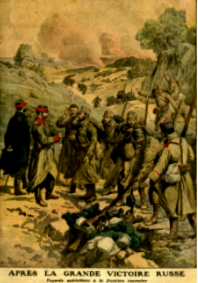
Nikifor Grigoriev was known for his
militant antiSemitism and his men carried out many pogroms against
local Jews in the Yelisavetgrad, Cherkasy and Kherson regions, which he
controlled in May and June 1919. According to the Encyclopedia Judaica,
The ataman Grigoryev, who in May 1919 seceded from the Red Army with his
men, was responsible for pogroms in 40 communities and the deaths of
about 6,000 Jews in the summer of 1919. Grigoriev's uprising was
supported by some Ukrainian peasants who were outraged by the Bolshevik
policy of "war communism" (including rural confiscation of food), and
were also hostile to the White movement that was backed by land-owners. |
|
|
|

.
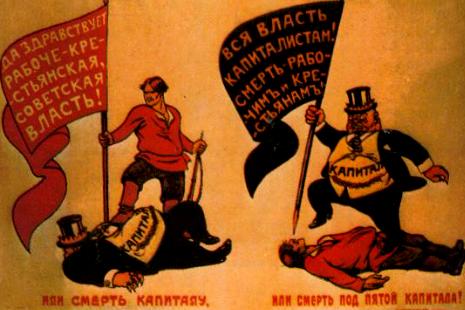 |
|
I FRANCESI LASCIANO ANCHE LA CRIMEA |
|
|
The Odessa evacuation left the Crimea as the remaining area of
direct French military intervention. Clemenceau had urged that the French hold
the Crimea as a bastion for future action in Southern Russia, again creating the
impression of a firm French commitment.82 Yet from the outset the French
presence in the Crimea had been marked by the same difficulties that plagued the
Ukrainian intervention.The diversion of troops originally scheduled for Odessa
raised this total to some five thousand by April 14, but two thousand of these
were described by French officers as "unen- thusiastic" Greek troops.83 French
units displayed no greater enthusiasm for their Crimean role as revealed in
reports of continued grumbling and threats of mutiny. Again the French command
observed that the refusal of Algerian troops to embark at Constanza for
Sebastopol provided dramatic evidence of widespread disenchantment among French
units. Over half of the French troops in Sebastopol were colonial soldiers,
including Algerian and Senegalese, who lacked adequate numbers of French
noncommissioned officers to command them. Their discipline was uncertain, and
the three metropolitan French battalions in the city were described as weak...the
Bolsheviks were approaching Sebastopol and on the 14th reached the outskirts of
the city. On the 16th they began an attack upon the city, but that evening
artillery fire from French warships caused the attackers to withdraw.86 The
following day a truce was arranged that was to last until April 25. During this
time the French agreed to turn the governance of Sebastopol over to the local
Soviets on April 19, and the truce would permit an orderly evacuation of Allied
forces from the city. According to terms of the armistice, the Soviets were
scheduled to take control of Sebastopol on the 19th. Thus the French command was
already committed to a transfer of power and to an evacuation when mutinies
erupted aboard several French vessels on the 19th. The centers of the mutiny
were the battle cruiser France and Admiral Amet's flagship, Jean Bart. Unrest
spread to other ships as the sailors demanded an immediate return to France and
an end to the intervention. The next day, the 20th, Easter Sunday, a number of
sailors landed in Sebastopol and participated in a large demonstration that
expressed support for the Soviet government and opposition to Allied
intervention. The French naval command sent a detachment of marines and some
Greek soldiers ashore to disperse the demonstration. The Allied troops fired on
the crowd and in the mêlée two civilians were killed, four soldiers and six
civilians were wounded. On the 21st French officers negotiated with the leaders
of the mutiny and promised a prompt evacuation. On the 23rd, the France departed
from the Sebastopol roadstead, fulfilling the promise of the French command and
carrying the ringleaders of the mutiny to court martials in France. The
armistice that had been signed was extended on April 25 to give the French more
time to arrange the evacuation of military forces and the removal of civilians
who wished to depart. On the 28th the evacuation of Sebastopol was completed,
and Bolshevik troops entered the city the following day. |
|
|
|
|
|
|
Torna
all'indice delle curiosità |
|
Torna a Confini |
|